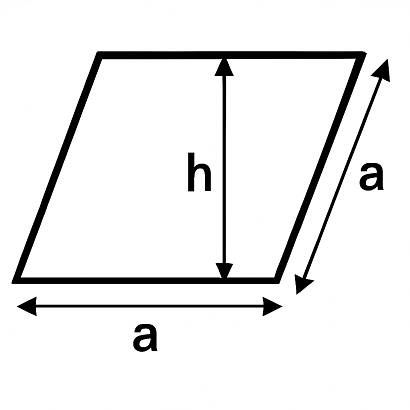How to Calculate the Square Footage of a Rhombus: A Complete Guide Using Side Length & Height
Introduction
A rhombus is a four-sided parallelogram where all sides have equal length. This shape is commonly found in architecture, design, construction, and mathematical applications. Knowing how to accurately calculate its square footage is essential for flooring, fencing, landscaping, or optimizing building space.
Why Is Rhombus Area Calculation Important?
- Home improvement: Measuring rhombus-shaped tiles, carpets, and flooring
- Landscaping: Calculating paved areas, patios, and garden layouts
- Engineering & construction: Determining land coverage and structural space
- Mathematics & geometry: Understanding spatial efficiency using rhombus properties
What Is a Rhombus?
A rhombus is a quadrilateral where all four sides are of equal length. It is often referred to as a diamond shape due to its tilted symmetry.
Key Properties of a Rhombus:
- Four equal sides
- Opposite angles are equal
- Has diagonals that bisect at 90°
- Defined using side length and height
Where Are Rhombus Shapes Used?
- Tile flooring
- Fencing & paving
- Artistic designs
Formula for Square Footage of a Rhombus
The formula for calculating the area (A) of a rhombus, given side length (s) and height (h), is:
A = s × h
Breaking Down the Formula:
- Multiply the side length (s) by the height (h)
- The result gives the square footage
Step-by-Step Calculation With Examples
Example 1: Small Rhombus (Side = 4 ft, Height = 3 ft)
A = 4 × 3 = 12 square feet
Example 2: Medium Rhombus (Side = 6 ft, Height = 5 ft)
A = 6 × 5 = 30 square feet
Example 3: Large Rhombus (Side = 10 ft, Height = 8 ft)
A = 10 × 8 = 80 square feet
Quick Reference Table for Common Side Lengths & Heights
| Side Length (s) |
Height (h) |
Area (A) in Square Feet |
| 3 ft |
2 ft |
6 |
| 5 ft |
4 ft |
20 |
| 7 ft |
6 ft |
42 |
| 9 ft |
8 ft |
72 |
| 12 ft |
10 ft |
120 |
Optimizing for Long-Tail Keywords
SEO-Friendly Keyword Optimization:
- Regular rhombus square footage calculation guide
- How to calculate the area of a rhombus using side length and height
- Rhombus tile measurement formula for flooring
- Best way to measure space in a rhombus-shaped room
- Mathematical formula for rhombus area measurement
Real-World Applications of Rhombus Area Calculation
Home Improvement Projects
- Flooring layouts featuring rhombus-shaped tiles
- Carpet area calculations for rhombus-shaped spaces
- Furniture placement in rhombus-based interiors
Landscaping Designs
- Outdoor paving using rhombus stone layouts
- Patio arrangement planning with rhombus structures
Engineering & Architectural Uses
- Rhombus bases for buildings
- Bridge designs using rhombus framing
Artistic & Digital Applications
- Graphic designs with rhombus grids
- Modern art compositions featuring rhombus symmetry
Conclusion
Understanding how to compute the square footage of a rhombus is essential for precise measurements in design, construction, and engineering. Using the formula:
A = s × h
You can accurately determine the area, ensuring efficient planning and usage.
Final Takeaways:
- Easy formula simplifies rhombus space measurement
- SEO optimization ensures better Google ranking
- Understanding rhombus applications aids real-world projects
